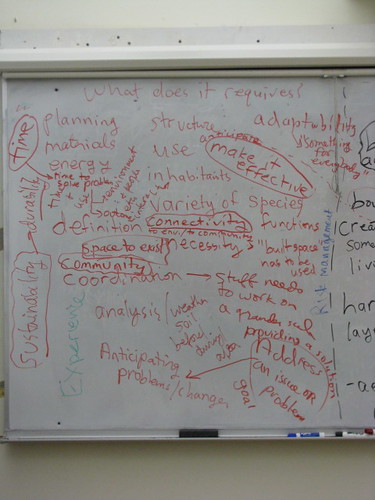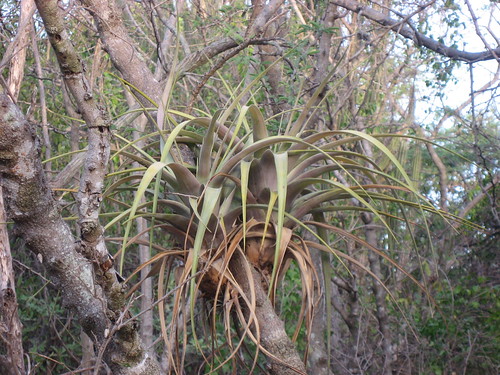
I just finished reading an article on biomimicry in the CORE77 Industrial Design website:
http://www.core77.com/blog/sustainable_design/biomimicry_38_what_would_you_ask_nature_21799.asp
The article talks about "emulating nature, its models, systems, and processes," but the real focus is on built environments. More specifically, buildings.
There's a picture of a termite mound and the Eastgate Centre in Harare, Zimbabwe, which was designed to emulate the features of native termite mounds that are found in the region. The Eastgate Centre building is famous for its use of natural, passive ventilation systems that mimic the interior of a termite mound. All of this is great stuff.
But I think we need to look deeper, much deeper than the built environment. In my previous post I discussed cellulose, the ubiquitous organic molecule that makes up all plant cells. I mentioned that it's indigestible by most organisms, and I finished my post with a picture of a termite mound in the Unesco Dry Forest in southern Puerto Rico.
How about that cellulose? And how do termites digest it? The biology of termite digestion (and all animals that ingest cellulose, including cows, sheep, goats, etc.) is that there is an abundant gut flora in all of these animals.
Single-celled organisms such as fungi and bacteria have the enzymes that break down cellulose into glucose, which is the molecule that is burned to fuel cellular respiration.
Looking at a termite mound, thinking about its structure, and even considering the social behavior of the termites is cool. But it only takes biomimicry part of the way. We ignore the internal workings, the incredibly complex symbiotic relationships, and the microscopic activities of all living things at our own peril.
Biomimicry is more than a cool building, a fast car, or a well-designed piece of furniture. The biomimicry movement claims to study living processes and systems but it's still hung up on buildings, which are relatively simple outcomes of the design process.



No comments:
Post a Comment